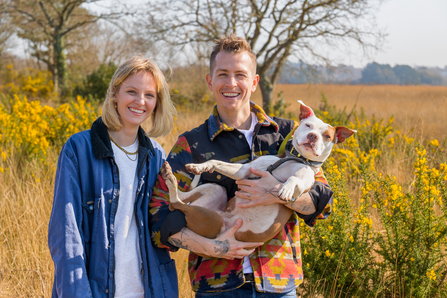The celebrated song of the skylark and bubbling call of curlew are evocative and welcome sounds of spring, as people explore our wonderful countryside and urban commons again. Birds like these – whose numbers are in worrying decline – are making their fragile nests on the ground, tucked away safely in long grass.
However, too often, an exuberant or inquisitive pooch, wandering or bounding through grass or heather, easily disturbs wildlife and scares adult birds off nests or tramples eggs. And vulnerable chicks can quickly perish if they are left alone for too long.
The Wildlife Trusts are calling on dog walkers to keep their dogs on short leads to help ground-nesting birds this spring and summer. Whether you’re visiting moorland, fields, urban parks or the beach, there are birds nesting on the ground – or just above it – that can be hard to see and are at risk of trampling, disturbance, and harm.





